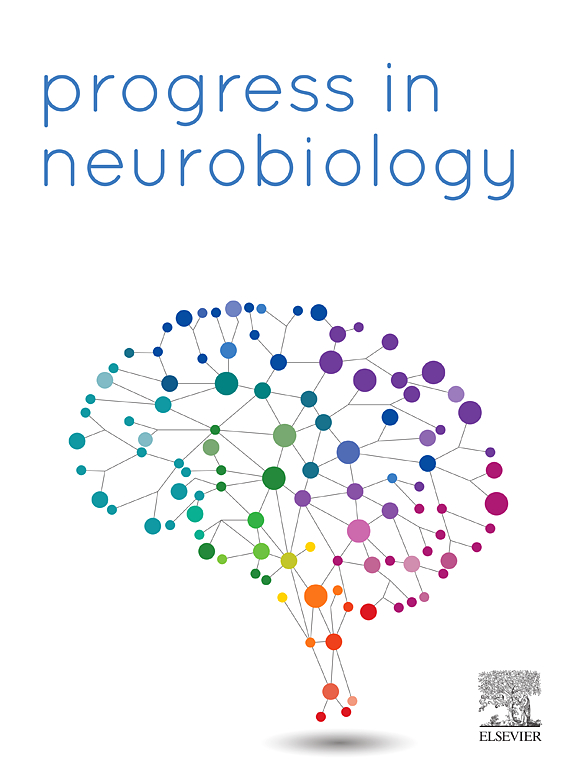Beyond neurons: How does dopamine signaling impact astrocytic functions and pathophysiology?
IF 6.1
2区 医学
Q1 NEUROSCIENCES
引用次数: 0
Abstract
Astrocytes, the most abundant glial cells in the central nervous system (CNS), are critical regulators of brain homeostasis and play an active role in synaptic signaling and plasticity. While dopamine, a key catecholamine neurotransmitter, has been traditionally associated with neuronal functions, emerging evidence highlights its significant impact on astrocytic physiology. This review explores how astrocytes contribute to dopaminergic signaling and the implications of this interaction in both physiological and pathological contexts. Specifically, we examined astrocytic dopamine receptor expression, signaling mechanisms, and region-specific effects on neuroinflammation, synaptic regulation, and neurotrophic factor secretion. Notably, astrocytic dopamine receptor activation plays dual inflammatory roles, modulating both anti- and pro- inflammatory responses depending on the receptor subtype and pathological environment. Furthermore, dopamine-evoked gliotransmitter release and neurotrophin secretion highlight the role of astrocytes in astrocyte-to-neuron communication, which impacts synaptic plasticity and neuronal survival. Dysfunction of astrocytic dopaminergic signaling has been implicated in neurodegenerative diseases such as Parkinson’s disease, where dopamine depletion drives reactive astrogliosis, altered glutamate homeostasis, and inflammatory responses. These findings underscore the complexity of astrocytic responses to dopamine and their potential as targets in conditions characterized by dysregulation of dopaminergic signaling. By highlighting recent advancements in understanding dopamine-astrocyte interactions, this review aims to provide insights into the broader roles of astrocytes in dopaminergic systems and their therapeutic potential in CNS disorders.
超越神经元:多巴胺信号如何影响星形细胞功能和病理生理?
星形胶质细胞是中枢神经系统(CNS)中最丰富的胶质细胞,是大脑稳态的关键调节细胞,在突触信号传导和可塑性中发挥积极作用。虽然多巴胺是一种关键的儿茶酚胺神经递质,传统上一直与神经元功能有关,但新出现的证据强调了它对星形细胞生理学的重要影响。这篇综述探讨了星形胶质细胞如何参与多巴胺能信号传导,以及这种相互作用在生理和病理背景下的意义。具体来说,我们研究了星形细胞多巴胺受体的表达、信号机制以及区域特异性对神经炎症、突触调节和神经营养因子分泌的影响。值得注意的是,星形细胞多巴胺受体激活具有双重炎症作用,根据受体亚型和病理环境调节抗炎和促炎反应。此外,多巴胺诱发的胶质递质释放和神经营养因子分泌突出了星形胶质细胞在星形胶质细胞与神经元通讯中的作用,从而影响突触可塑性和神经元存活。星形胶质细胞多巴胺能信号的功能障碍与神经退行性疾病(如帕金森病)有关,其中多巴胺耗损驱动反应性星形胶质增生、谷氨酸稳态改变和炎症反应。这些发现强调了星形细胞对多巴胺反应的复杂性,以及它们在多巴胺能信号失调的条件下作为靶点的潜力。通过强调在多巴胺-星形胶质细胞相互作用方面的最新进展,本综述旨在深入了解星形胶质细胞在多巴胺能系统中的广泛作用及其在中枢神经系统疾病中的治疗潜力。
本文章由计算机程序翻译,如有差异,请以英文原文为准。
求助全文
约1分钟内获得全文
求助全文
来源期刊

Progress in Neurobiology
医学-神经科学
CiteScore
12.80
自引率
1.50%
发文量
107
审稿时长
33 days
期刊介绍:
Progress in Neurobiology is an international journal that publishes groundbreaking original research, comprehensive review articles and opinion pieces written by leading researchers. The journal welcomes contributions from the broad field of neuroscience that apply neurophysiological, biochemical, pharmacological, molecular biological, anatomical, computational and behavioral analyses to problems of molecular, cellular, developmental, systems, and clinical neuroscience.
 求助内容:
求助内容: 应助结果提醒方式:
应助结果提醒方式:


